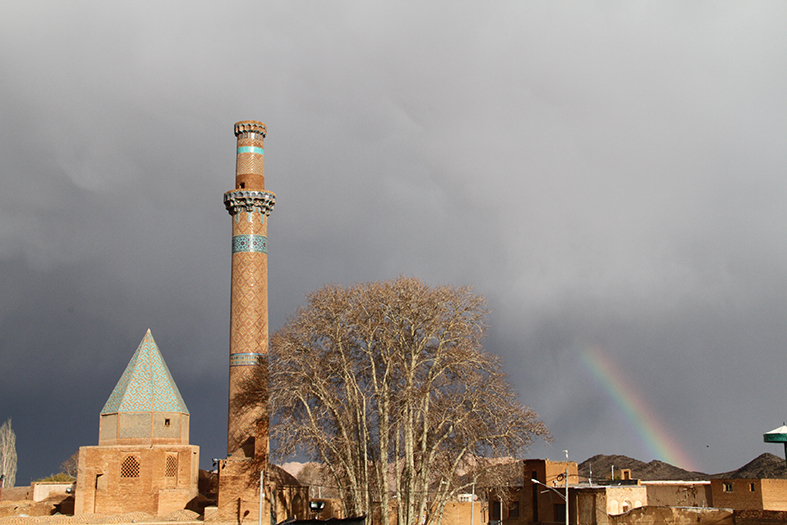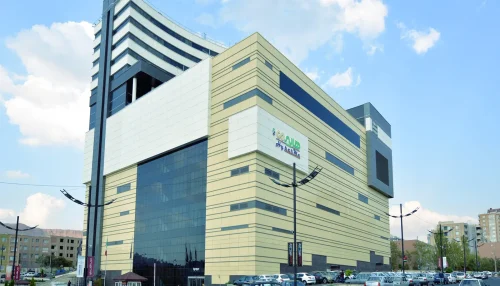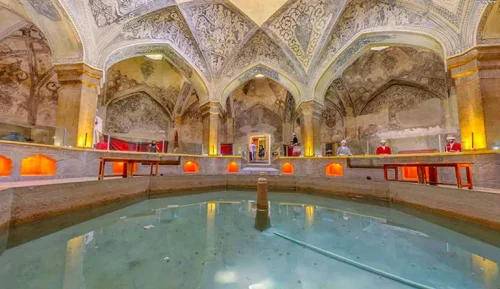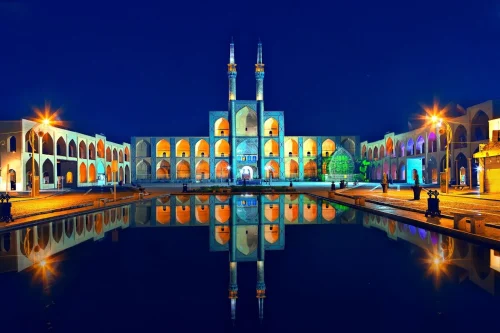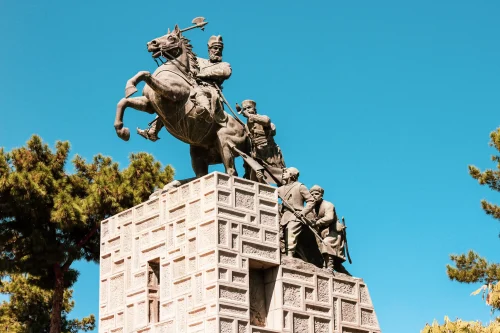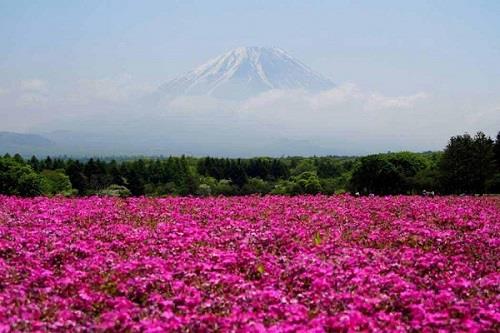Natanz: Exploring One of the Ancient Cities of Isfahan Province
Natanz, a historical and beautiful city in the Isfahan Province, boasts an ancient heritage. With numerous tourist and historical attractions including lush gardens and ancient sites, Natanz is recognized as one of the most captivating destinations for both domestic and international tourists.
The history of Natanz dates back to pre-Islamic times. The ancient remnants in this city indicate an advanced civilization existing in this region. Natanz also held special significance during the Islamic era and was known as a center of science and culture.
Tourist attractions in Natanz are diverse and appealing. Among the most notable tourist attractions in Natanz are lush gardens, ancient sites, old mosques, and water reservoirs. The garden “Bagh-e Fin” is among the most prominent attractions in Natanz which, with its beautiful and verdant scenery, attracts visitors throughout all seasons of the year.
Traveling to Natanz can offer you an unforgettable experience. With “Iran Charter“, you can travel to Natanz with the best price and high quality. For more information about traveling to Natanz, you can call 02191091190 or send an email to info@irancharter.ir.
History of Natanz: The Ancient Beginnings of Natanz City
Natanz is one of the oldest cities in the Isfahan province, with a rich and complex history spanning thousands of years. This city, with a history of over two thousand years, has witnessed significant cultural, economic, and social transformations. From the Sassanian era to the Islamic periods, Natanz played an important role in the region’s history, with numerous historical artifacts from these periods present today. The exploration of Natanz’s history underscores the city’s significance along Iran’s trade and cultural routes, with its influences clearly felt in local architecture and traditions.
Geography and Location of Natanz: A Map of Natanz in Isfahan Province
Situated in the northwest of Isfahan province, Natanz is known as one of the most important cities in this area. Natanz’s geographical location near the Karkas Mountain ranges and neighboring provinces like Gilan and Mazandaran ensures a natural and environmental diversity in the region. Standing at 1666 meters above sea level, Natanz benefits from a moderate and pleasant climate. Its geography and location have not only supported agricultural and livestock development but also facilitated tourism in the area.
Demographics of Natanz: The Culture and Local Life of Natanz People
The people of Natanz are known for their rich culture and traditions, which is one of the defining characteristics of this city. The majority of Natanz’s population are of Persian descent, with a local language similar to ancient Persian. The residents engage in various activities, including agriculture, animal husbandry, handicrafts, and tourism. The culture of Natanz is marked by unique ceremonies and rituals such as sweeping and Nakhl-Gardani, which are recognized not only locally but also nationally. Local life in Natanz is characterized by high hospitality and social cohesion, making it an appealing destination for tourists.
Climate of Natanz: Climatic Diversity and Its Effects on People’s Lives
The weather of Natanz, due to its geographical location and elevation, shows significant diversity. Natanz lies between mountainous and desert regions, experiencing four distinct seasons with notable temperature variations. Summers in Natanz are warm and dry, while winters are cold and snowy. Spring and autumn are considered the best seasons to visit due to the pleasant temperatures. This climatic diversity has impacted agriculture and livestock as well as attracted tourists interested in nature and outdoor sports.
Natanz Climates: Three Main Climatic Zones in Natanz
The climate of Natanz is generally divided into three primary zones: mountainous, plain, and desert climates. The mountainous climate is observed in the higher areas of Natanz, where low temperatures and frequent rainfalls occur. The plain climate is found on the mountain slopes, offering milder weather suitable for agricultural activities. The desert climate is evident in the lower parts of Natanz, characterized by hot and dry summers and milder winters. This climatic variety allows Natanz to cultivate a wide range of agricultural products and provides diverse scenic spots for tourists.
Tourist Attractions in Natanz: From History to Nature
Natanz, with its array of historical and natural attractions, is among the popular tourist destinations in Isfahan province. From historic towers and ancient mosques to beautiful gardens and lush mountains, Natanz offers a unique setting for tourists. The Taroq Rod Fortress, Natanz Grand Mosque, the historic village of Abyaneh, and Pariyan Cave are among the notable sights in this city, each telling a story of Natanz’s history and culture. Furthermore, nature tourism, mountain climbing, and photography are popular activities that allow tourists to enjoy the beautiful and unique landscapes of the region.
The Best Season to Visit Natanz: Essential Tips for Travelers
Choosing the best season to visit Natanz depends on your interests and needs. For those looking for mild weather and natural beauty, spring and autumn are the best choices. During these seasons, the weather is neither too hot nor too cold, providing ideal conditions for sightseeing. Summer is suitable for desert tours and water activities, while winter is perfect for winter sports enthusiasts and those seeking unique cold experiences in Natanz. By selecting the appropriate season, you can enhance your travel experience to Natanz and enjoy all the amenities this city offers.
Souvenirs and Handicrafts of Natanz: Cultural and Artistic Heritage
With its long history and rich culture, Natanz offers a unique collection of souvenirs and handicrafts. Natanz delicacies include local dried fruits, handmade ceramics, wooden carving, metal engraving, and basketry, reflecting the art and creativity of its people. Additionally, high-quality pears and aromatic saffron are other outstanding products of this region, ideal as delicious and fragrant gifts for friends and family. Natanz handicrafts are appreciated not only domestically but also in international markets, playing an important role in introducing Natanz’s culture and art to the world.
Accommodation in Natanz: A Guide for Travelers and Tourists
For travelers planning a trip to Natanz, choosing the right accommodation is key to a flawless journey. Natanz offers a variety of accommodations, including modern hotels, luxury suites, and eco-homes, providing diverse options for every type of traveler. The website Iran Charter (IranCharter.ir) offers services for renting various accommodations in Natanz, assisting travelers in selecting the best option according to their needs and budget. Additionally, the proximity of accommodations to Natanz’s main tourist attractions ensures easy access and convenience for exploration.
How to Access Natanz: Suitable Transportation Routes
Access to Natanz is conveniently possible from Tehran. Travelers can fly to Isfahan Airport and then use ground transportation to reach Natanz. By entering the Khalij-e-Fars Highway through the Ashrafi Esfahani Bypass, and then via the Amirkabir Freeway and Amiriyah Road, you will arrive in Natanz. Additionally, bus routes and charter services provide suitable transportation to Natanz. Given Natanz’s central location in Iran, accessing this city is very easy for both domestic and international tourists, making travel to the region more manageable for all.
Frequently Asked Questions
- Where is Natanz?
- Natanz is a beautiful county in the Isfahan province known as a garden city, with Natanz city as its center.
- What is the population of Natanz?
- According to the latest census, over 44,000 people reside in Natanz.
- What is the elevation of Natanz above sea level?
- Natanz is 1666 meters above sea level.
- How is the weather in Natanz?
- Natanz has diverse weather; it is bordered by the Karkas mountains, and part of the county lies in the desert. The temperature varies by location and elevation in different parts of Natanz.
- What is the best season to travel to Natanz?
- The best seasons to visit Natanz are spring and autumn when the weather is mild and pleasant.
- How can we access Natanz?
- To reach Natanz, first get to Isfahan and enter the Khalij-e-Fars Highway via the Ashrafi Esfahani Bypass. Then use Amirkabir Freeway and Amiriyeh Road to arrive at Natanz.
- What are the tourist attractions in Natanz?
- Attractions in Natanz include the Natanz Fire Temple, the Grand Mosque, Taroq Rod Fortress, the historic village of Abyaneh, Pariyan Cave, Miraboualamalli Caravanserai, Afushteh Tourism Complex, and the mountainous Qaleh Kooh Castle.
- What are the recommended tourist activities in Natanz?
- Suggested activities include visiting fruit gardens, mountain climbing in the Karkas range, hiking, nature tours, photography, and exploring historical and religious sites.
- What souvenirs and handicrafts does Natanz offer?
- Souvenirs and crafts of Natanz include pears, traditional ceramics, wood carving, metal engraving, basket weaving, porcelain, and dried fruits.
- What are the major shopping centers in Natanz?
- Shopping centers include the Thursday Market and modern stores in the Natanz city center for essential and everyday needs.
- What are the local dishes of Natanz?
- Local dishes of Natanz include Mashab (bean soup), Ash Kashk, Shami, and Koshkaba, which have unique flavors and tastes.
- Which restaurants are recommended in Natanz?
- Quality restaurants in Natanz include Golestan, Shams-ol-Emareh, Kuhab, Charsough, Shab-haye Natanz, and Hamshahri Fast Food, offering a variety of local and international cuisines.
- How is accommodation in Natanz?
- For accommodation in Natanz, you can utilize various lodgings like hotels, suites, and rental homes. Online platforms like Iran Charter make booking quick and easy. For more information and reservations, call 02191091190 or email info@irancharter.ir.
- What is the history of Natanz?
- Natanz, with its deep-rooted history, is recognized as one of the oldest cities in the Isfahan province, referenced as ‘Balideh’ in historical texts like those of Yaqut al-Hamawi and Abu Sa’id Samani.
- What is the ethnicity of Natanz’s people?
- Most of Natanz’s population are Persian, with a culture and local language reminiscent of ancient Persian dialects.
- What are the major cultural ceremonies in Natanz?
- Major cultural events include the Thursday Market festivals, the ‘Sweeping’ ceremony at the Hosseiniyeh Ershad, Nakhl-Gardani, and Ta’zieh, some of which are nationally recognized intangible cultural heritages.

